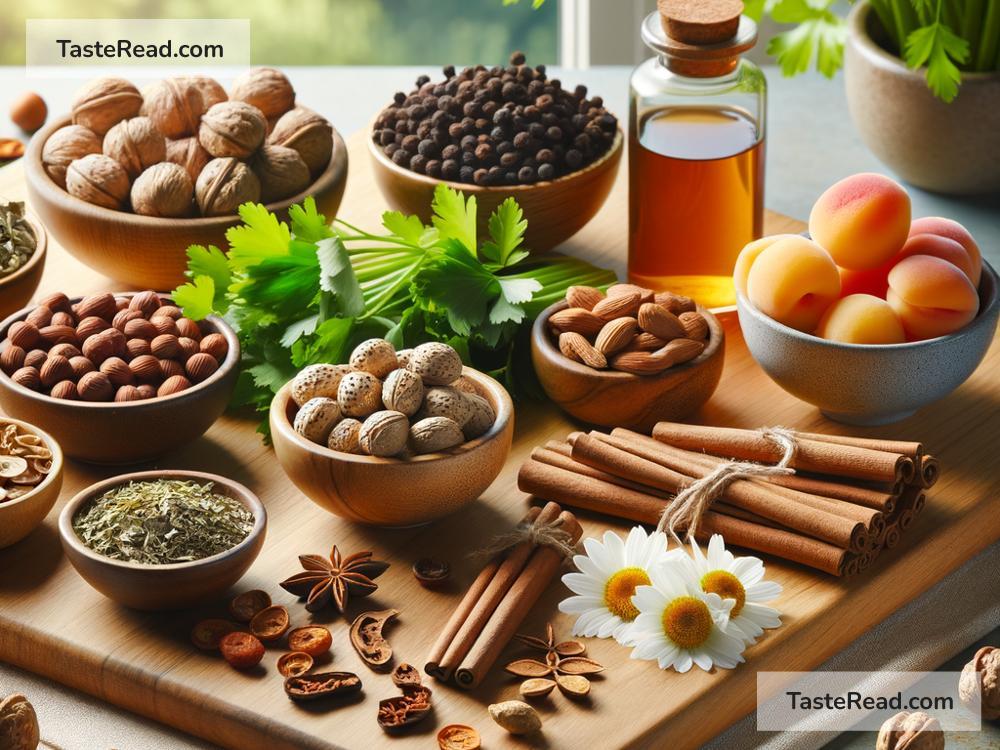How to Incorporate More Coumarin-Rich Foods into Your Diet
Have you ever heard of coumarin? It’s a naturally occurring compound found in certain plants that gives them a pleasant aroma and flavor. While coumarin is often used in perfumes and medicines, it’s also found in some common foods—and adding these to your diet can add variety and exciting flavors to your meals.
In this blog, we’ll explore what coumarin is, which foods contain it, and how you can easily incorporate these foods into your daily diet.
What Is Coumarin?
Coumarin is a chemical compound found in many plants, including cinnamon, tonka beans, sweet clover, and lavender. It has a sweet, slightly spicy aroma that makes it popular in fragrances. While coumarin occurs naturally in food, it’s worth noting that consuming extremely high amounts of it may pose health risks. However, eating foods containing coumarin in moderation is generally considered safe and can bring extra flavor and enjoyment to your meals.
Benefits of Coumarin-Rich Foods
While coumarin itself is not considered a nutrient, foods containing it often come with other health benefits. Coumarin-rich foods may have antioxidant properties, meaning they help protect your body’s cells from damage caused by harmful molecules. Additionally, many of these foods, like cinnamon or herbs, can contribute to overall health because they contain other vitamins, minerals, and beneficial compounds.
Importantly, since coumarin-rich foods often have bold flavors, they can help you reduce the need for added sugar or salt in recipes—making meals both tastier and healthier.
Foods Rich in Coumarin
Here are some foods and ingredients known to contain coumarin:
- Cinnamon – One of the most famous sources of coumarin. Cassia cinnamon, in particular, is high in coumarin, while Ceylon cinnamon contains much less of it.
- Tonka Beans – Known for their vanilla-like aroma, tonka beans are commonly used in desserts and flavoring.
- Sweet Clover – While typically an animal forage plant, extracts like coumarin can be found in herbal teas.
- Lavender – Often used in baking or drinks for its floral aroma and mild coumarin content.
- Chamomile Tea – Chamomile contains small amounts of coumarin and is famous for its calming properties.
- Carrots, Celery, and Parsley – These vegetables contain traces of natural coumarins and can be easily added to meals.
How to Add Coumarin-Rich Foods to Your Diet
Ready to start enjoying coumarin-rich foods? Here are some simple and practical tips for incorporating them into your daily meals.
1. Start Your Day with Cinnamon
Cinnamon is an easy way to add flavor and a touch of coumarin to your breakfast. Sprinkle a pinch of cinnamon on oatmeal, yogurt, or your morning coffee. You can also blend it into a smoothie or use it as a topping for pancakes and waffles.
2. Warm Yourself with Chamomile Tea
Chamomile tea is not only relaxing, but it also contains trace amounts of coumarin. Substitute your usual afternoon coffee or evening drink with chamomile tea for a soothing, fragrant option.
3. Experiment with Herbs
Fresh parsley, celery, and carrots are versatile and can be used in soups, salads, and stir-fries. Parsley, for example, makes an excellent garnish for dishes and can add flavor to homemade sauces and pestos.
4. Bake with Lavender
Lavender adds a floral aroma and can be used in baked goods like cookies, cupcakes, and muffins. You can also infuse lavender in sugar or honey to create a fragrant sweetener for teas or desserts.
5. Make Tonka Bean Desserts (Carefully)
Tonka beans are popular in gourmet recipes, especially for desserts like custards, ice creams, and cakes. Since tonka beans contain a significant amount of coumarin, ensure you’re using them in moderation or consult recipes to balance quantities safely.
6. Spice Up Your Dinner
Use cinnamon or parsley in savory dishes to deepen flavor. For example, cinnamon works beautifully in Middle Eastern and Moroccan-inspired dishes like spiced lamb, stews, or roasted vegetables.
Cooking Tips for Coumarin-Rich Foods
- Start Small: If you’re new to coumarin-rich foods, introduce them gradually into your meals to find flavors you enjoy. For example, try adding a small amount of cinnamon to your coffee before putting it into larger recipes.
- Balance Flavors: Many foods rich in coumarin have strong tastes, so balance them with mild ingredients. Pair cinnamon with apples or lavender with honey to create well-rounded flavors.
- Use Freshness to Your Benefit: Fresh parsley, celery, or carrots often contain the most vibrant flavors and nutrients, so use them soon after purchasing.
Things to Keep in Mind
While coumarin-rich foods can bring exciting flavors to your diet, it’s essential to consume them in moderation. For example, cassia cinnamon contains higher amounts of coumarin compared to Ceylon cinnamon. If you’re using cinnamon regularly in larger quantities, it’s worth opting for Ceylon cinnamon to reduce coumarin intake.
Also, if you have existing health concerns or take medications that may interact with natural chemicals in foods, consult a healthcare professional before dramatically changing your diet.
Final Thoughts
Incorporating coumarin-rich foods into your diet is a fun and simple way to experiment with new flavors. From the warm, comforting taste of cinnamon to the refreshing aroma of lavender, these ingredients can take your cooking to the next level while potentially boosting your overall wellness.
Ready to start? Begin with small steps—add cinnamon to your breakfast, sip chamomile tea in the evening, or sprinkle fresh parsley on your dinner—and discover the aromatic joys of coumarin-rich foods!

